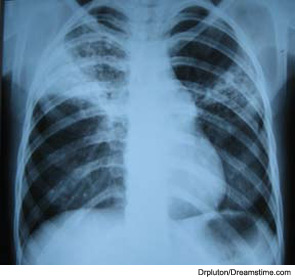The medical world is full of words with long histories and multiple meanings. Here are a few commonly used in the field of rheumatology with their definitions and where they came from.
ARTHRITIS:
Merriam-Webster’s defines “arthritis” as the “inflammation of joints due to infectious, metabolic, or constitutional cases.” Its first known use was in 1543 from the Greek arthron, meaning joint. More than 100 known types of arthritis exist today.
Sources:
- Arthritis. Merriam-Webster Dictionary and Thesaurus website. Available at: www.merriam-webster.com/dictionary/arthritis. Accessed July 20, 2011.
- Arthritis. PubMed Health. Available at: http://www.ncbi.nlm.nih.gov/pubmedhealth/PMH0002223/. Accessed July 20, 2011.
- Definition of “arthron.” From Mosby’s Medical Dictionary, 8th edition. 2009, Elsevier. Available at: http://medical-dictionary.the freedictionary.com/arthron. Accessed July 20, 2011.
RHEUMATISM:
Encyclopædia Britannica lists rheumatism as “any of several disorders that have in common inflammation of the connective tissues, especially the muscles, joints, and associated structures.” The word derives from the Greek rheumatismos, coined by Galen of Pergamum, a philosopher, physician, and pioneer of medical practice, in the 2nd century CE. Today, few if any doctors use the word “rheumatism” to describe a specific medical condition, although it still exists as a colloquialism.
Source:
- Rheumatism. (2011). In Encyclopædia Britannica. Available at: http://www.britannica.com/EBchecked/topic/501241/rheumatism. Accessed July 20, 2011.

STEROID:
(deep-joint injection steroids, topical steroids)
For “steroid,” Webster’s says, “any of numerous natural or synthetic compounds containing a 17-carbon 4-ring system and including the sterols and various hormones and glycosides.” When referring to a steroid that treats inflammation, the word is short for “corticosteroid” because it resembles the body’s natural hormone cortisol (as opposed to an anabolic steroid used for building muscle).
Sources:
- Steroid. Merriam-Webster Dictionary and Thesaurus website. Available at: http://www.merriam-webster.com/medical/steroid?show=0&t=1311193274. Accessed July 20, 2011.
- Steroids to Treat Arthritis. WebMD. Available at: http://www.webmd.com/rheumatoid-arthritis/guide/steroids-to-treat-arthritis. Accessed July 20, 2011.
JOINT:
First used in the 13th century from the middle English jointe and the Anglo-French joindre, Webster’s Medical Dictionary calls a joint “the point of contact between elements of an animal skeleton whether movable or rigidly fixed together with the surrounding and supporting parts (as membranes, tendons, or ligaments).”
Source:
- joint. Merriam-Webster Dictionary and Thesaurus website. Available at: http://www.merriam-webster.com/medical/joint. Accessed July 20, 2011.
LUPUS:
Short for lupus erythematosus, the term comes from 14th century Middle English from the Latin for wolf, the reason being that physicians of the time described lupus’s symptoms as “a hungry wolf eating the flesh.”
Sources:
- lupus erythematosus. (2011). In Encyclopædia Britannica. Available at: http://www.britan nica.com/EBchecked/topic/351725/lupus-erythematosus. Accessed July 20, 2011.
- Potter B. The History of the Disease Called Lupus. J Hist Med Allied Sci. 1993;48:80-90.
X-RAY:
The discovery of X-rays is credited to Wilhelm Conrad Röntgen in 1895. One of his first medical X-ray photographs is of his wife’s left hand. He named the short-length radiation “X” for “unknown radiation.”
Source:
- Novelline R. Squire’s Fundamentals of Radiology. Harvard University Press. 5th edition. 1997. Available at: http://en.wikipedia.org/wiki/X-ray. Accessed July 20, 2011.
SYNOVITIS:
Merriam-Webster’s simply defines synovitis as the inflammation of synovial membranes surrounding a joint. The word “synovia” comes from the Greek syn meaning “with” and the Latin ovum for “egg” because the viscous fluid resembles that of an egg white. The term was most likely coined by Paracelsus, a Swiss physician, in the 16th century.
Sources:
- synovitis. Merriam-Webster Dictionary and Thesaurus website. Available at: http://www.merriam-webster.com/medical/synovitis. Accessed July 20, 2011.
- synovia. Dictionary.com. Dictionary.com Unabridged. Random House, Inc. Available at: http://dictionary.reference.com/browse/synovia. Accessed July 21, 2011.
- Edwards JCW (2003). Chapter 17. In Klippel, John H.; Hochberg, Marc C. Rheumatology. St. Louis: Mosby. pp. 159–68. Available at: http://en.wikipedia.org/wiki/Synovial_membrane#cite_note-2. Accessed July 21, 2011.

LYME DISEASE:
Named for the town in Connecticut where it was first diagnosed, Lyme disease is a bacteria transmitted through the deer tick and causes a number of symptoms. The most tell-tale sign of Lyme disease is a “bull’s-eye rash,” but since the symptoms are not predictable, many cases go undiagnosed, and often patients are misdiagnosed when they show a rash and flu-like symptoms. If Lyme disease goes untreated, a patient can develop Lyme arthritis.
Source:
- Understanding Lyme Disease – The Basics. WebMD. Available at: http://www.webmd.com/a-to-z-guides/understanding-lyme-disease-basics. Accessed July 21, 2011.
TUBERCULOSIS (TB):
The name of a family of infectious bacteria that attack different areas of the body depending on the strain. Traditional TB attacks the lungs, but tuberculosis arthritis, or Pott Disease (tuberculosis spondylitis), affects the spinal column. Named for a British surgeon, Sir Percivall Pott, who described the condition in 1779, Pott Disease usually causes deterioration of membranes surrounding the vertebrae, resulting in a hunchback.
Source:
- Pott disease. (2011). In Encyclopædia Britannica. Available at: http://www.britannica.com/EBchecked/topic/472936/Pott-disease. Accessed July 21, 2011.
BONE:
Merriam-Webster’s says that bone is “the hard largely calcareous connective tissue of which the adult skeleton of most vertebrates is chiefly composed.” The word has German origins and probably came from a German or Dutch cognate meaning “shank of the leg.”
Sources:
- bone. Merriam-Webster Dictionary and Thesaurus website. Available at: http://www.merriam-webster.com/dictionary/bone?show=0&t=1311259988. Accessed July 21, 2011.
- bone. Dictionary.com. Online Etymology Dictionary. Douglas Harper, Historian. Available at: http://dictionary.reference.com/browse/bone. Accessed July 21, 2011.
FRACTURE:
The dictionary definition of the noun form of fracture is “the act or process of breaking or the state of being broken; specifically: the breaking of hard tissue (as bone).” The word can also refer to the abrupt damage to soft tissue, such as an organ or membrane. The word’s origins trace to the 15th century from Middle English to Latin fractura.
Source:
- fracture. Merriam-Webster Dictionary and Thesaurus website. Available at: http://www.merriam-webster.com/dictionary/fracture. Accessed July 21, 2011.
FIBROMYALGIA:
Also known as fibromyalgia syndrome, it is the second most common arthritic condition after osteoarthritis. It denotes a collection of symptoms and has taken other names, such as “muscular rheumatism,” “fibrositis,” and “psychogenic rheumatism” before the name “fibromyalgia” was coined by Mohammad Yunus who published it in a paper in 1981. The word comes from the Latin fibro for fiber and the Greeks myo for muscle and algos for pain.
Sources:
- What is fibromyalgia? WebMD. Available at: http://www.webmd.com/fibromyalgia/guide/what-is-fibromyalgia. Accessed July 20, 2011.
- Yunus M, Masi AT, Calabro JJ, Miller KA, Feigenbaum SL. Primary fibromyalgia (fibrositis): Clinical study of 50 patients with matched normal controls. Semin Arthritis Rheum. 1981;11:151-171.
- Wolfe F, Smythe HA, Yunus MB, et al. The American College of Rheumatology 1990 Criteria for the Classification of Fibromyalgia. Report of the Multicenter Criteria Committee. Arthritis Rheum. 1990;33:160-172.
NURSE:
Relating to healthcare, Merriam-Webster’s defines nurse as “a person who cares for the sick or infirm; specifically: a licensed healthcare professional who practices independently or is supervised by a physician, surgeon, or dentist and who is skilled in promoting and maintaining health.” The word first used in the 13th century derives from the Middle English norice, norce, from the Anglo-French nurice, and from the Latin feminine of nutricius for nourishing.
Source:
- nurse. Merriam-Webster Dictionary and Thesaurus website. Available at: http://www.merriam-webster.com/dictionary/nurse?show=0&t=1311261710. Accessed July 21, 2011.
GOUT:
Refers to an acute arthritic attack of one or more joints due to an overload of uric acid in the blood. First used in the 13th century by Randolphus of Bocking, “gout” comes from the Middle English goute, the Anglo-French gute and the Latin gutta, both for “drop.” Before that, it was known as “the king of diseases and the disease of kings” and can be traced back to 2600 BC in Egypt. The Greek Hippocrates also described the condition to some extent in his Aphorisms.
Sources:
- gout. Merriam-Webster Dictionary and Thesaurus website. Available at: http://www.merriam-webster.com/dictionary/gout. Accessed July 21, 2011.
- Pillinger MH, Rosenthal P, Abeles AM. Hyperuricemia and gout: new insights into pathogenesis and treatment”. Bulletin of the NYU Hospital for Joint Diseases. 2007;65:215–221. Available at: http://en.wikipedia.org/wiki/Gout#cite_note-Pillinger-45. Accessed July 20, 2011.
- Richette P, Bardin T. Gout. Lancet. 2010;375:318-328. Accessed at: http://en.wikipedia.org/wiki/Gout#cite_note-Pillinger-45. Accessed July 21, 2011.
IMMUNE:
This word is from Middle English and derives from the Latin immunis, from in- + munia, meaning to be free from services or obligations, i.e. taxes. Its first known use was documented in the 15th century, but the concept was written about by the Greek Thucydides in 430 BCE when the plague attacked Athens.
Sources:
- immune. Merriam-Webster Dictionary and Thesaurus website. Available at: http://www.merriam-webster.com/dictionary/immune. Accessed July 21, 2011.
- Gherardi E. The Concept of Immunity. History and Applications. Immunology Course Medical School, University of Pavia. Accessed at http://en.wikipedia.org/wiki/Immune#cite_note-Gheradi-2, on July 21, 2011.

SPONDYLITIS:
Simply defined as “inflammation of the vertebrae,” spondylitis was first used in 1849 and comes from the Greek sphondylos for vertebra. This symptom is most commonly found in Pott Disease.
Source:
- spondylitis. Merriam-Webster Dictionary and Thesaurus website. Available at: http://www.merriam-webster.com/dictionary/spondylitis?show=0&t=1311263131 Accessed July 21, 2011.
SKELETAL:
An adjective referring to anything associated with the skeleton. The first known use of the word occurred in 1854. The word “skeleton” derives from the 1570s and descends from the Latin sceleton for “bones, bony framework of the body.” That comes from the Greek skeleton soma meaning “dried-up body, mummy,” whose originating words mean imply “dried up” and “dry up.”
Sources:
- skeletal. Merriam-Webster Dictionary and Thesaurus website. Available at: http://www.merriam-webster.com/dictionary/skeletal. Accessed July 21, 2011.
- skeleton. Dictionary.com. Online Etymology Dictionary. Douglas Harper, Historian. http://dictionary.reference.com/browse/skeleton Accessed July 21, 2011.
Michael O’Neal is a writer based in New York.
